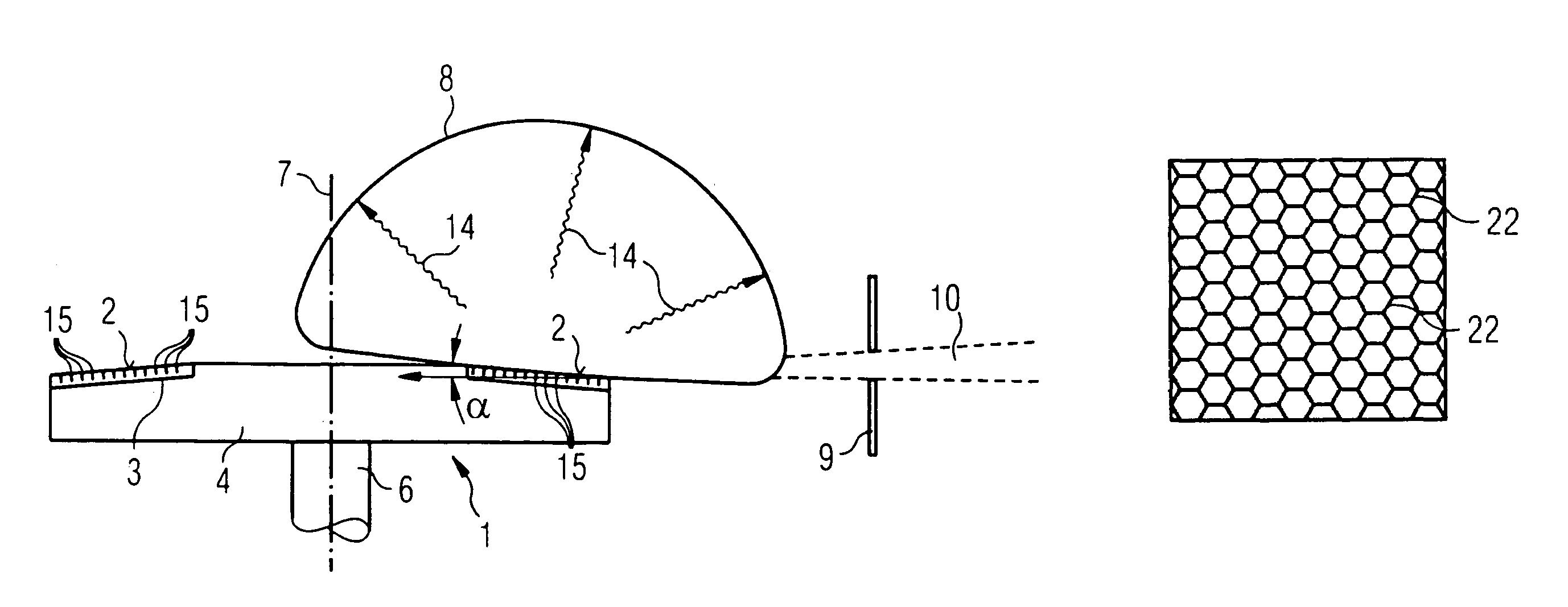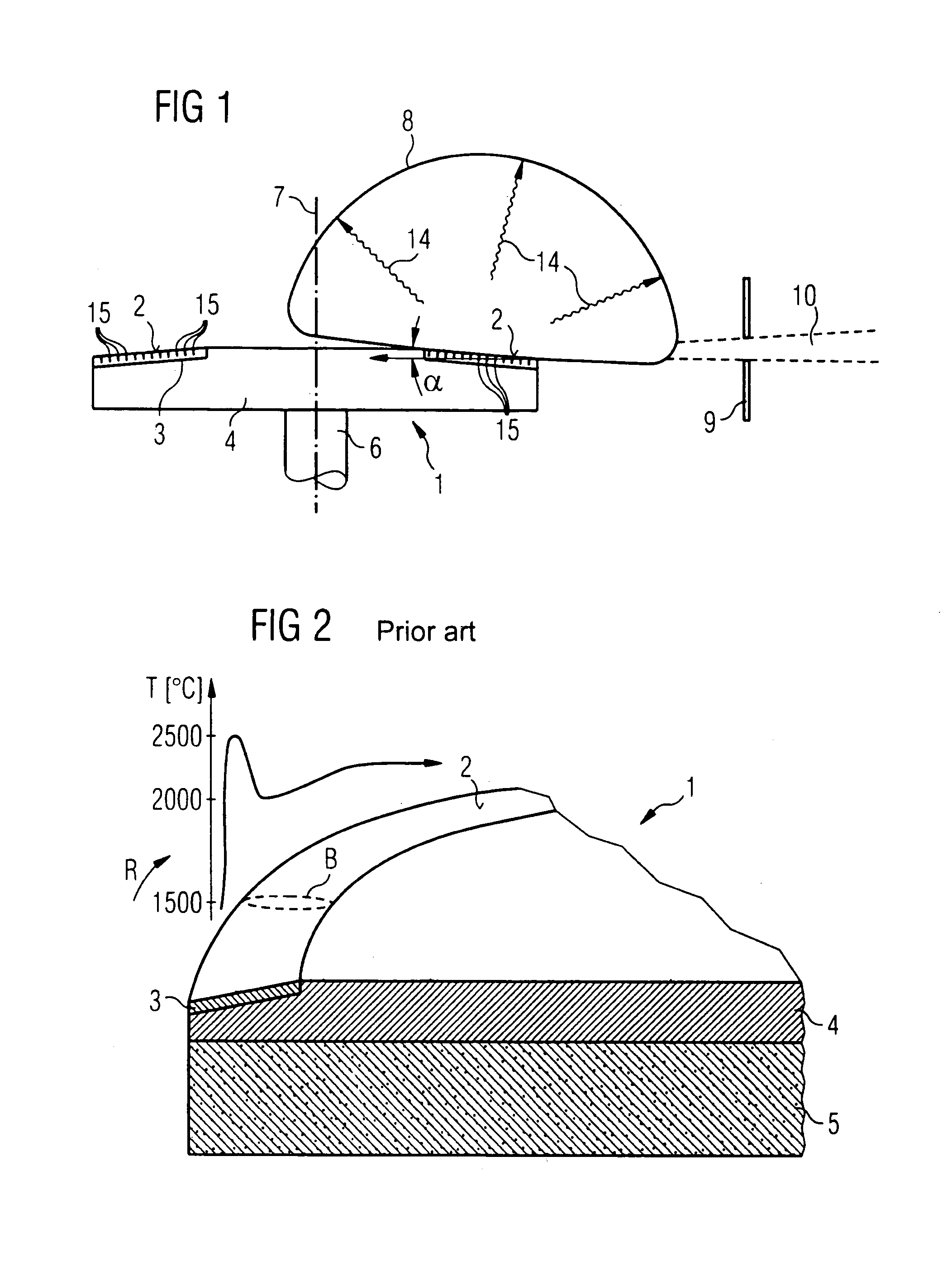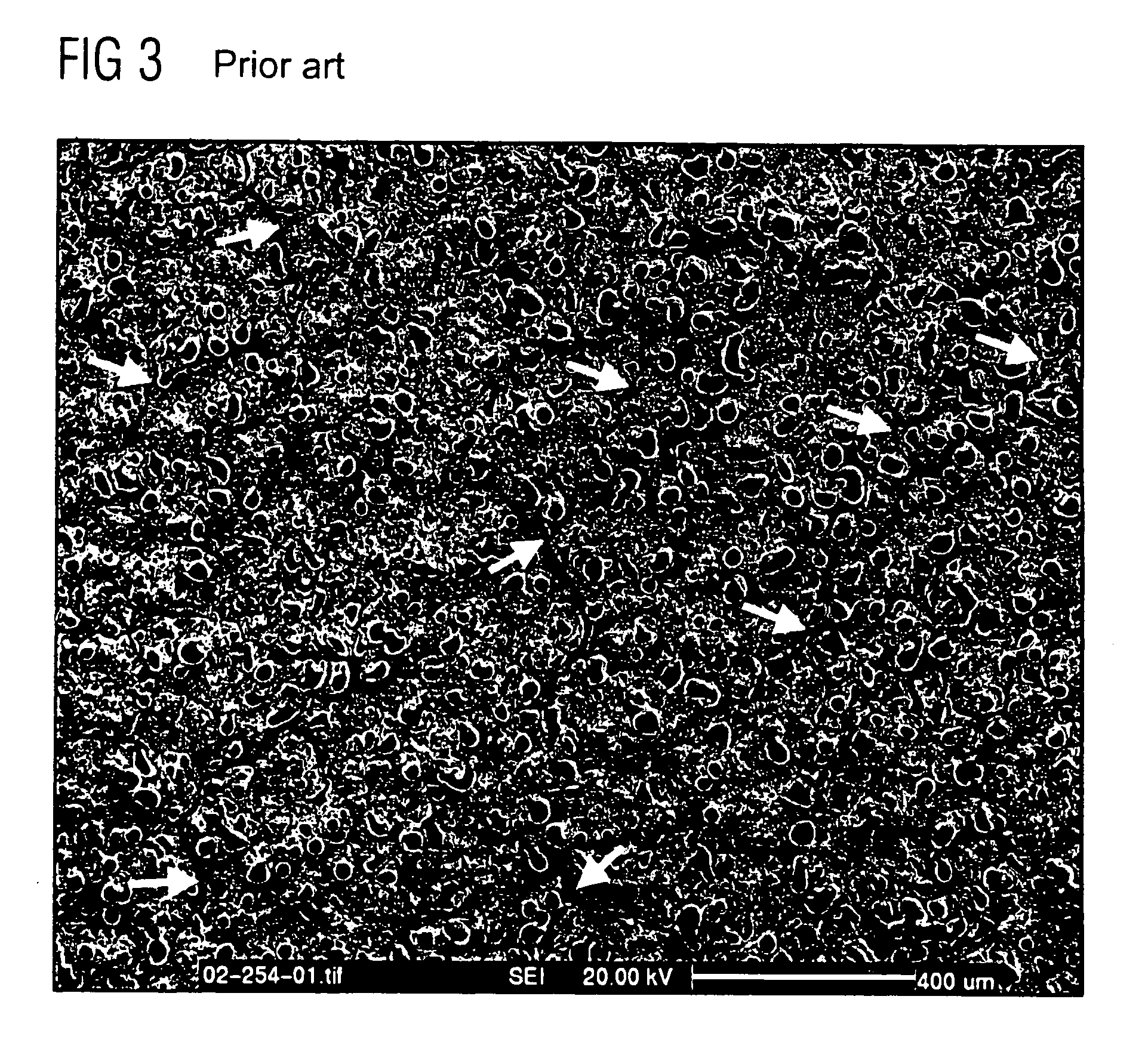X-ray anode having an electron incident surface scored by microslits
a microslit and electron incident surface technology, applied in the field of x-ray anodes, can solve the problems of material flow events, material volume missing, orange peel-like corrugation of the surface, etc., and achieve the effect of roughening the surfa
- Summary
- Abstract
- Description
- Claims
- Application Information
AI Technical Summary
Benefits of technology
Problems solved by technology
Method used
Image
Examples
Embodiment Construction
[0046]In the description below, it is assumed, insofar as it is not noted otherwise, that the x-ray anode 1 is a rotating anode 1 having a focal path surface 2 in which microslits are introduced. FIGS. 1 and 2 show the principle assembly of such a rotating anode 1.
[0047]The rotating anode 1 is a substantially planar, circular anode plate 4 made from molybdenum or TZM. A material layer 3 made of tungsten, with a proportion or approximately 5% rhenium (WRe 5) is located along the outer circumference. The surface 2 of this layer 3 is the focal path surface that, as was already described above in connection with FIG. 2, is exposed to strongly varying thermal stresses. The anode plate 4 is attached to a shaft 6, via which the anode plate 5 is displaced in rotation around the axis of symmetry 7 lying perpendicular to the plate surface. The focal spot B, at which the accelerated, high-energy electrons strike on the focal path surface 2, thereby moves around the focal path surface 2. By int...
PUM
| Property | Measurement | Unit |
|---|---|---|
| Length | aaaaa | aaaaa |
| Length | aaaaa | aaaaa |
| Length | aaaaa | aaaaa |
Abstract
Description
Claims
Application Information
 Login to View More
Login to View More - R&D
- Intellectual Property
- Life Sciences
- Materials
- Tech Scout
- Unparalleled Data Quality
- Higher Quality Content
- 60% Fewer Hallucinations
Browse by: Latest US Patents, China's latest patents, Technical Efficacy Thesaurus, Application Domain, Technology Topic, Popular Technical Reports.
© 2025 PatSnap. All rights reserved.Legal|Privacy policy|Modern Slavery Act Transparency Statement|Sitemap|About US| Contact US: help@patsnap.com



